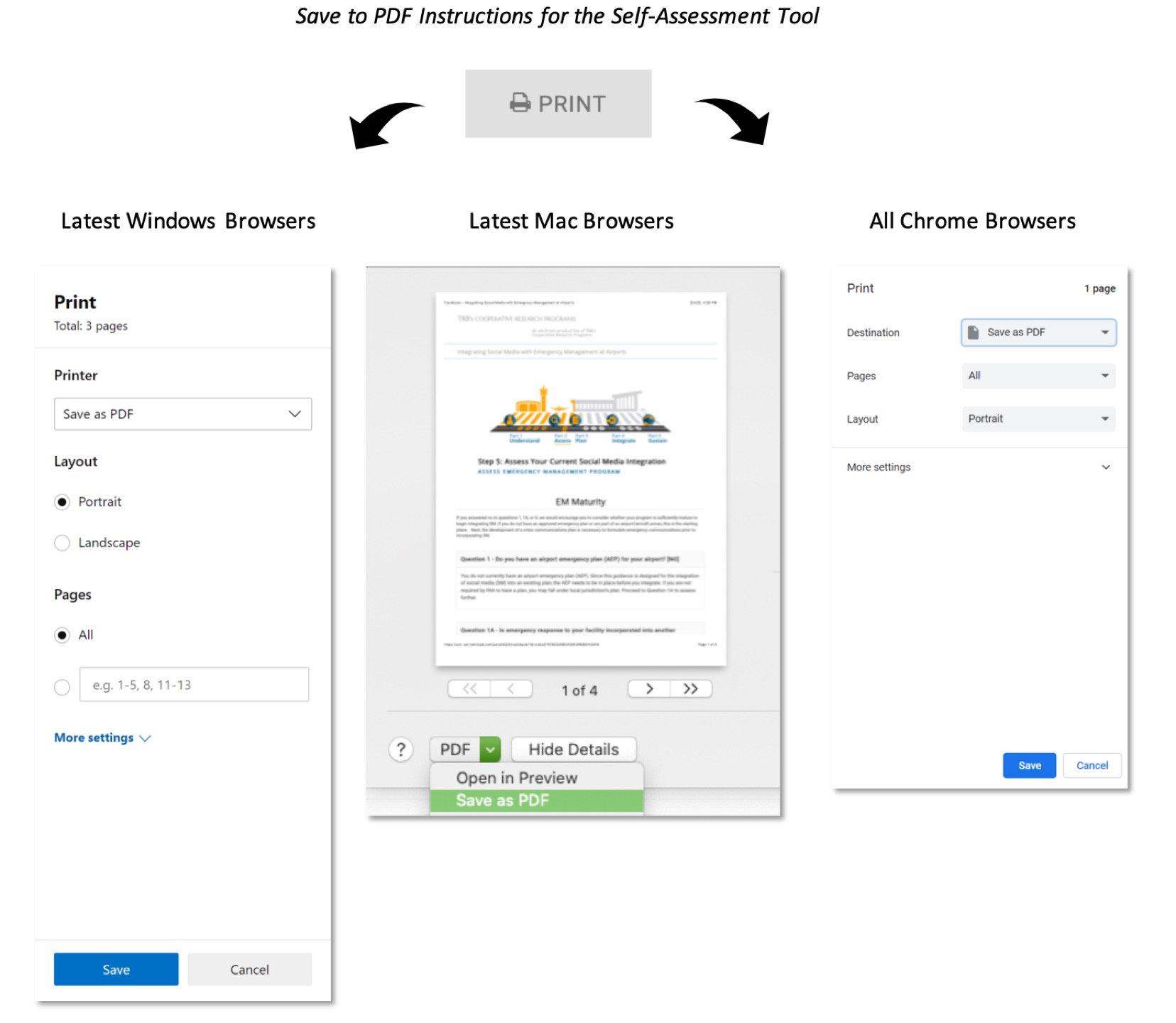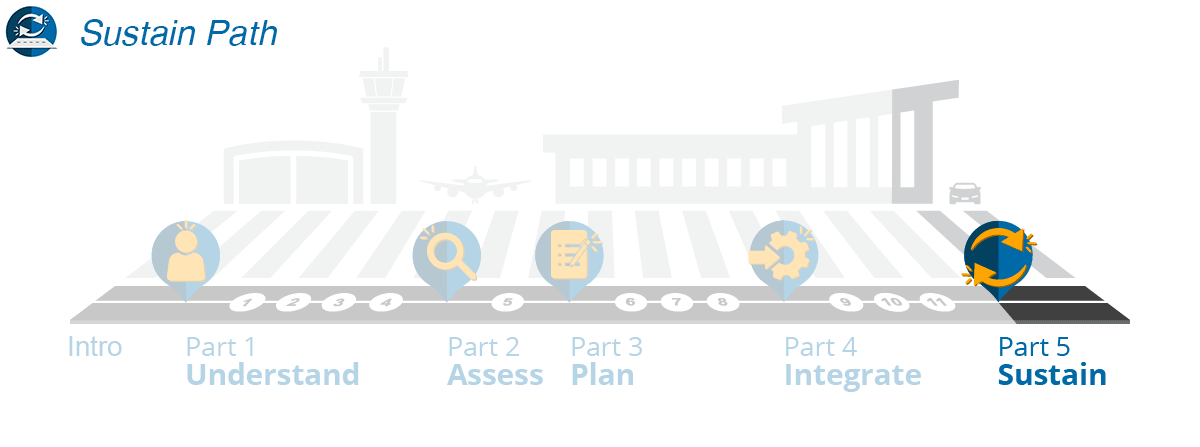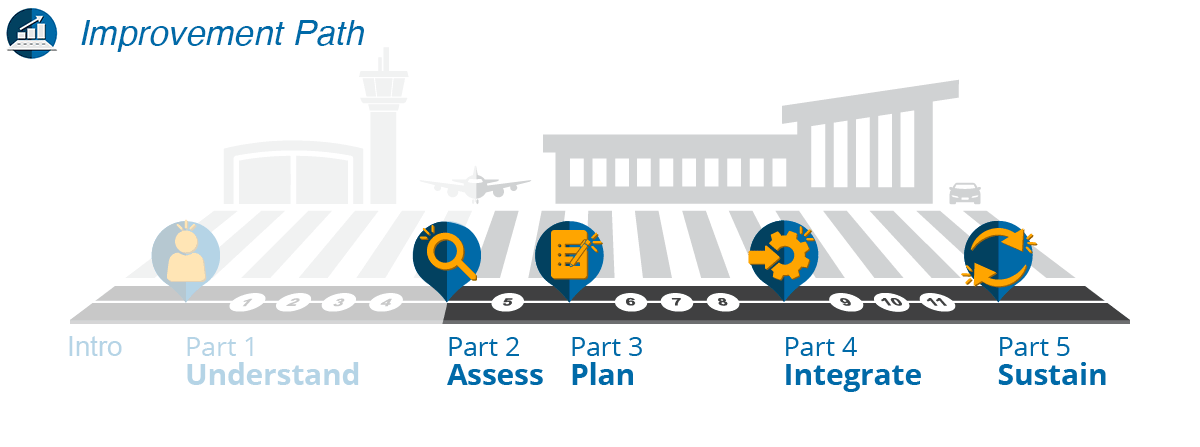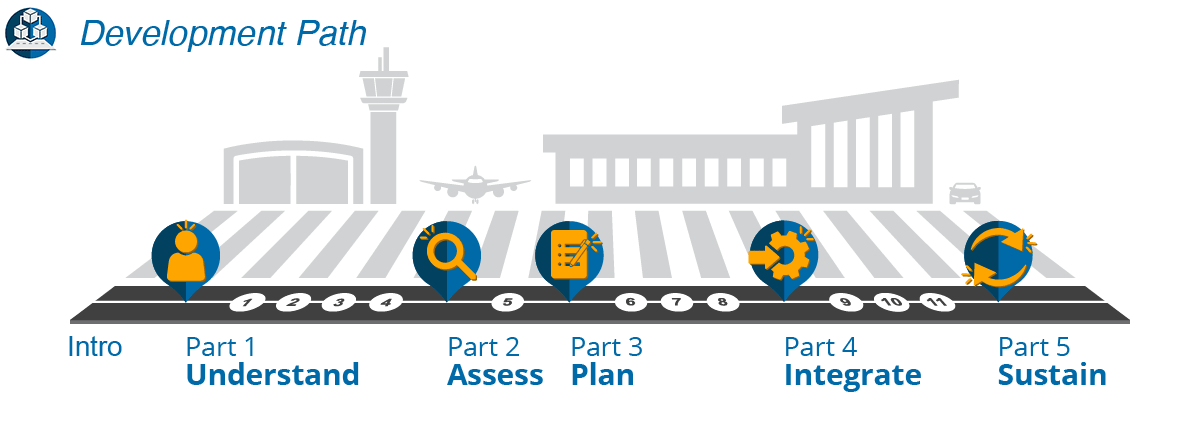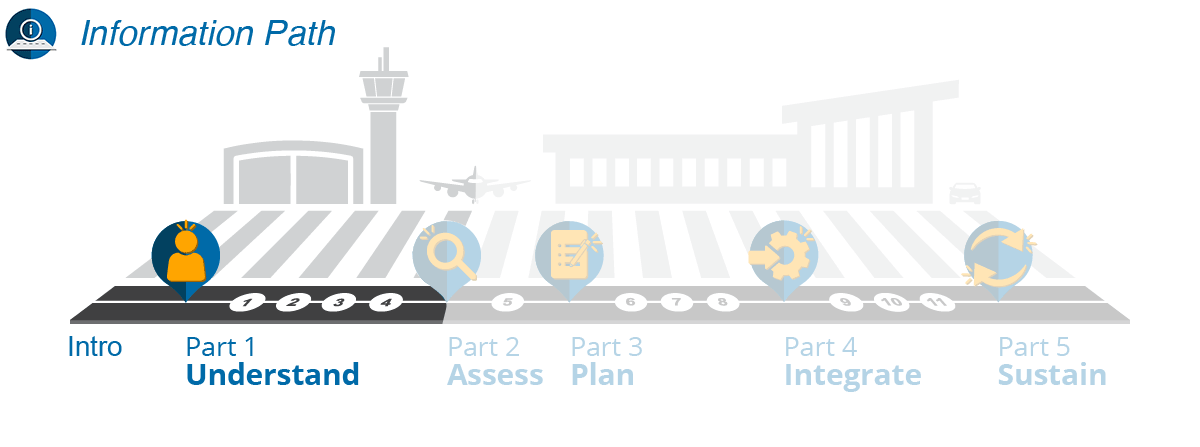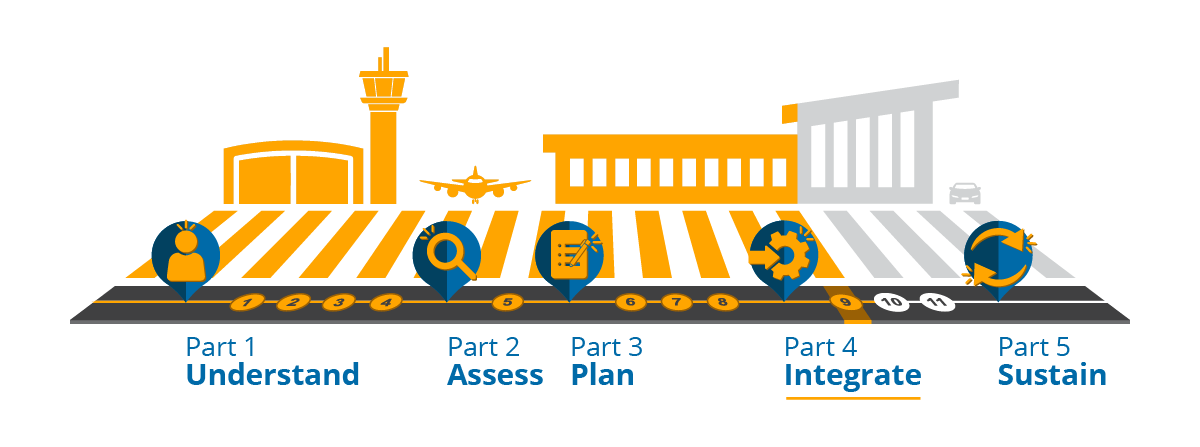
Step 9: Establish Your Integration Needs
Roles and Responsibilities
It is important to define the roles and responsibilities within the airport community to ensure your SMEM program is properly executed, and conflicting or duplicated duties are minimized. In conducting various interviews with airport operators and stakeholders, the research team noted that post-incident debriefs brought to light circumstances where modifying the roles and responsibilities of personnel monitoring SM would have helped facilitate better communications and improve information sharing with the public. We also observed that airport operators are seeking ways to improve information sharing with incident command (IC) staff, possibly by providing a liaison at the IC post to share situational awareness gained from listening to SM.
In establishing roles and responsibilities, you should set proper boundaries (i.e., keeping everyone in their swim lane) to provide maximum coverage of SM channels and help maintain stakeholder trust and cooperation. Since an incident at your airport can impact many stakeholders, you must be sure to fully coordinate your SM messaging efforts to prevent confusion. This is especially important for your airline partners, who place a high value on brand and reputation. You should also take into consideration local and federal government partners who may have strict guidelines for information sharing and reporting.
Define Custom Roles and Responsibilities
As you get into this part of the program, be ready to customize your team’s roles and responsibilities to meet your needs. You should build your team and define roles and responsibilities based on your goals and objectives and the resources available to your team.
The interviews noted previously revealed several approaches to meeting the various goals and objectives of the organizations. For example, to improve information sharing with IC staff, some airport operators have provided a liaison at the IC post to share situational awareness gained from SM listening. Some airport operators have used volunteers to supplement full-time staff during extended operations, while others have strict policies against non-airport staff having access to SM accounts. Sometimes, budgetary considerations dictated whether an airport operator supported all operations in-house or whether a vendor was used to provide listening (monitoring). At smaller airports, SM may be a one-person operation leveraging support from the county or other mutual aid partners.
In working with the recommendations we have laid out below, it is a good practice to also build relationships with other airports and municipalities to discover how they have built their SMEM programs. But remember, you will need to consider your unique factors as you define your SMEM program roles and responsibilities.
For large incidents, you may establish a joint information center (JIC) to bring stakeholders together to facilitate information coordination. Most emergency management (EM) programs should contain plans for operating a JIC (further study can be found through FEMA Independent Study, IS702, NIMS Public Information Systems). Your JIC plan can be as simple or as complex as needed, but it should not go beyond the resources that your team can realistically provide. If needed, look to external resources to supplement the plan and fill other duties and responsibilities through mutual aid from other public information officers (PIOs) or trained volunteers.
A JIC is either a physical or “virtual” operation where public information staff representing all agencies and organizations involved in incident management activities coordinate and disseminate official, timely, accurate, easy-to-understand, and consistent information to the public.
The following are some sample roles and responsibilities within the JIC that you may consider; we have included standard JIC roles along with SMEM roles for those who may not have a JIC plan. As you read these, please note that the name of the role may vary from airport to airport, and some positions may include a combination of duties depending on staffing resources.
- JIC Director/Lead PIO: responsible for managing the JIC
- Media Relations Manager: serves as the primary point of contact for the media, may also serve as the spokesperson
- Spokesperson: prepares and conducts regular news briefings and conferences
- Social Media Monitoring: responsible for monitoring/listening to SM activity and disseminating to JIC director and/or content manager
- Content Manager: develops content for SM distribution and press releases
- Incident Command Liaison: acts as the point of contact and information sharing from and to the incident commander
- Friends and Family Center (FFC) Liaison: acts as the point of contact and coordination when the FFC is activated
- Governmental Liaison (local and federal): serves as the main point of contact for information sharing and collaboration
- Website Manager: maintains web pages containing information about the incident
- Technical and Graphics Support: provides support for content manager
- Administrative Support: provides general office support such as scheduling, managing office supplies, copying, and performing clerical duties
Tips for the Airport with Fewer Resources
A JIC does not have to be complex, but it should include the necessary resources to communicate to the public and to internal and external stakeholders. Start with the PIO and media relations personnel from your list of stakeholders or municipalities.
Once you have identified what roles you need, your next step is to develop position descriptions, specific qualifications, and responsibilities for each role. For examples of some of these roles, we suggest that you review the National Response Team (NRT) JIC Model. Although this model was developed on the federal level, it serves as a good resource.
It is easy to become overwhelmed, especially when researching federal programs, which can be very complex. Build your plan so that it is sustainable and then conduct training and exercises to validate your plan and verify that the new roles are properly defined. Take the time to discuss the plan with your team and do not hesitate to modify it as results come in.
